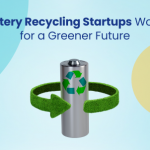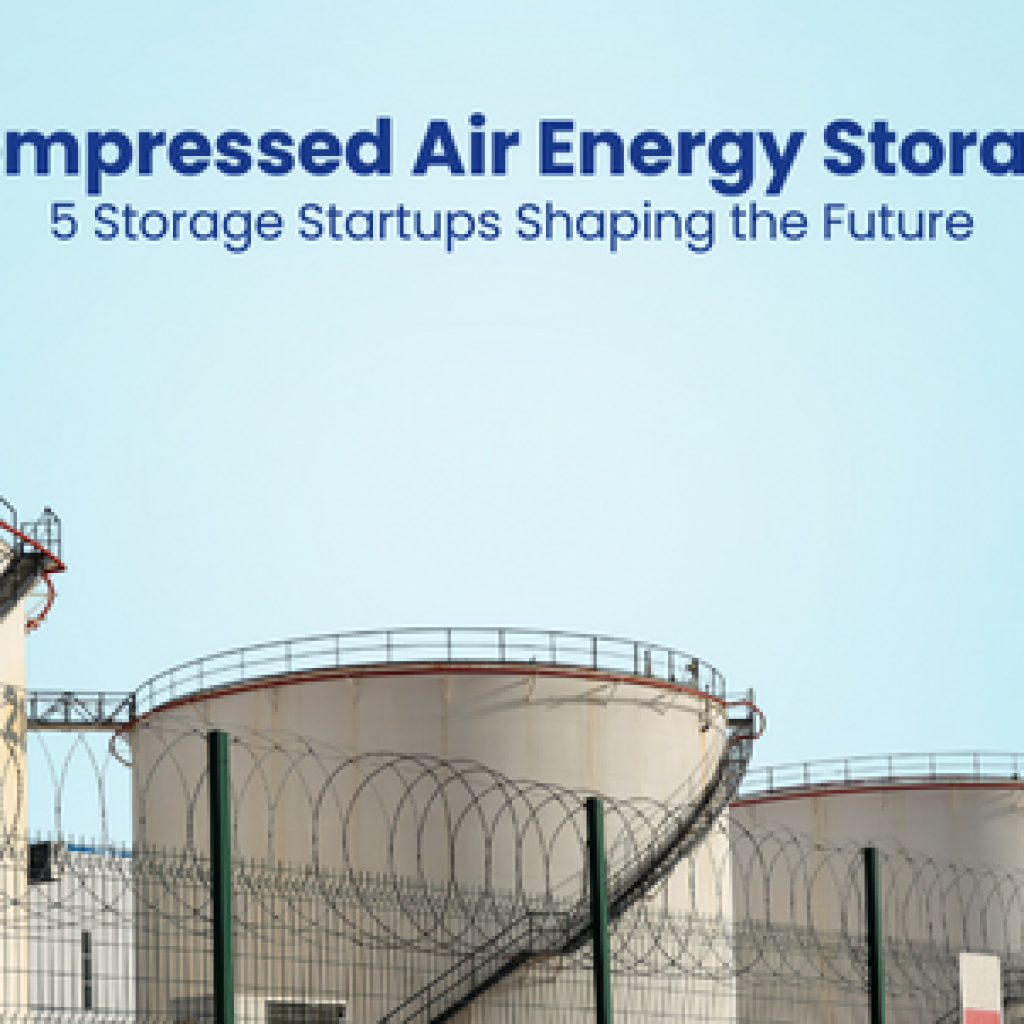Unlike many battery tech startups that claim to be disruptive, Ambri’s liquid metal battery is actually an improvement for large-scale stationary energy storage.
Founded in 2010 by Donald Sodaway, a professor of materials chemistry at MIT, the startup saw Bill Gates as its angel investor with a funding of $6.9 Million.
Ambri has been working on its proprietary liquid metal batteries for more than a decade. After such a long time, anyone would think what the current status of the company and its progress might be.
With the same curiosity, we started our research and discover Ambri’s past couple of years progress.
In addition to it revolutionizing energy storage technology, we found a huge investment of $144 Million that Ambri got from Reliance Industries and other investors. The investment brought multiple partnerships to Ambri that made its plans to go international a little easier.
With all that one can think that Ambri’s revolution to transform stationary energy storage and accelerate the mass adoption of wind and solar power seems a bit closer. Or is it?
Let’s find out.
How does Ambri’s Liquid Metal Battery work?
Two different elements, antimony, which melts at about 630 degrees Celsius, and calcium alloy, which has a melting point of over 800 degrees Celsius, are combined with a solid electrolyte and placed in a sealed chamber insulated with ceramic materials.
The whole is housed in a positive pole stainless steel case with a negative pole attached to the top. At room temperature, all internal elements are in a solid state and cannot react with each other, so batteries are completely safe to transport.
To charge the system for the first time the contents are heated to 500 degrees Celsius. Then the metal and salt electrolyte become one molten mass. Gravity then separates them according to density. Antimony goes down. The molten salt stays in the middle and the calcium alloy rises to the top. Since antimony is much more negative electrically than calcium alloys, there is a potential difference or voltage between them.
When the battery discharges, the calcium alloy breaks down into calcium ions and electrons. Ions migrate to the antimony layer and electrons flow out through an external circuit to do useful work. The discharge phase results in a completely homogeneous new alloy of antimony and calcium inside the battery, on which the electrolyte is placed.
After that initial start-up blast of energy to get things going after installation, the reaction generates its own heat, keeping the battery at optimum working temperature and eliminating the need for an external heat source. That means everything stays in a molten state, which eliminates problems like deformation and dendrite formation that electrochemical batteries tend to suffer from over time.
To recharge the system, an electrical current is passed through the battery to reverse the reaction and place the calcium alloy and the antimony back in their original positions.
Liquid metal batteries need to be worked hard – ideally being fully charged and discharged twice a day to maintain their constant high temperature. Under those conditions, Ambri claims an overall end-to-end efficiency of 80 percent and tens of thousands of cycles with negligible degradation or capacity fade.
And that self-maintaining temperature means the batteries will work just as safely and effectively in very hot or very cold climates around the world.
Ambri’s Further Progress – Agreement, Investments, and Business Deals
In Nov 2020, Ambri inked an agreement with Terrascale to deploy its liquid metal battery for Terrascale Energos Reno Project. The project will include the development of a data center that will capitalize on the site’s renewable energy infrastructure. TerraScale intends to develop a data center with 500MW of renewable power on-site generation within ten years to power an inside-the-fence microgrid.
In May 2021, Ambri commenced the Energos Reno project to provide 250-megawatt hours of liquid metal battery storage for the Terrascale data center out in Reno, Nevada.
“The Ambri systems are particularly well suited for the project’s high desert operations for shifting of its large amounts of renewable solar load and for its grid system peak shaving capacity.”
– Adam Briggs, Ambri’s Chief Commercial Officer
In August 2021, Ambri announced it had secured 144 million dollars worth of funding from Reliance New Energy Solar, a subsidiary of Reliance Industries, Paulson & Co. Inc., and Bill Gates along with some new investors.
The funding amount is intended to design and build its liquid metal battery manufacturing facilities in the US and other growing markets to meet the growing demand from the grid-scale energy storage market and large industrial energy customers, such as data centers.
The investment also made Reliance New Energy Solar Ltd. a strategic partner to manufacture Ambri’s liquid metal batteries in India.
Reliance plans to work with Ambri to build out a network of liquid metal battery storage across its facilities to secure a domestic source of energy for its supply chain.
“Reliance Industries sees this strategic partnership with Ambri as an important step in its journey of achieving its decarbonization goals. Our investment in Ambri is part of our broader plan to develop the Dhirubhai Ambani Green Energy Giga Complex, which will be amongst the largest integrated renewable energy manufacturing facilities in the world and the epicenter of India’s green economy movement.”
– Mukesh Ambani, Reliance chairman
And with Paulson & Co. inc investment, Ambri entered into a long-term antimony supply agreement with Perpetua Resources. Perpetua’s largest shareholder is Paulson & Co. Inc. As Antimony is a key mineral in Ambri’s battery system, this agreement would help secure a domestic source for its supply chain.
New Business Deals
In June 2022, Ambri announced its Innovation hub, a new manufacturing facility in Milford Massachusetts. Ambri is using some of the investment money from Reliance Industries to build the Innovation hub. This hub will be home to Ambri’s expanded R&D lab and host an on-site Ambri pilot system.
It further will enable the company to significantly broaden its manufacturing operations. This is to cope with what looks to be some pretty rapid growth in the operation size and scope. The facility has a footprint of 140,000 square feet. This is more than triple the size of the current manufacturing facility.
That’ll allow for a production capacity of 200,000 battery cells per year. Ambri will start installing it into customer systems in 2023. The new facility is expected to support up to 200 jobs. It is estimated to be at full volume production in 2024.
“Expanding our operations makes it possible for us to continue to innovate and produce with the speed and the scale needed to deliver quality, cutting-edge products that meet the growing demands for safe and affordable long-duration energy storage. It also further establishes the U.S. — and Massachusetts more specifically — as the hub of our operations and innovation. That means creating American jobs, supporting local economies, and strengthening domestic supply chains — all things that will be critically important as the industry matures.”
– Adam Briggs, Chief Commercial Officer at Ambri
In June 2022, Ambri secured a deal with an independent South African renewable energy provider called Earth and Wire. The contract will see Ambri supply a battery system to serve a 300-megawatt, 1200-megawatt-hour, combined wind, and solar power generation site in the Eastern Cape. This will be the largest battery energy storage system in South Africa.
As demand for energy in South Africa increases and the publicly owned electricity utility Eskom starts to decommission its coal generation fleet, Ambri is well placed to support the introduction of renewable energy resources that can connect effectively and supply consistently into the South African national grid. Ambri will begin shipping batteries for this project in 2024 with installation completed in 2026.
“Our companies share a mission of accelerating the decarbonization of grids and enabling consumers to meet their energy needs from renewable resources. As South Africa works to address its current energy challenges, this partnership – and our technology more broadly – will help Earth & Wire and other renewable energy providers solve long-standing operational challenges and stabilize their nation’s energy grids.”
– Adam Briggs, Chief Commercial Officer at Ambri
Then in July 2022, Ambri achieved a landmark accreditation when it received certification for UL 1973. This certification is the standard for batteries for use in stationary and motive auxiliary power applications.
“This is an important milestone for our company”, said David Bradwell, chief technology officer at Ambri. “It sends a strong and positive message to the market about the safety and resilience of our battery technology.”
In Aug 2022, Ambri announced that it’s been selected by Xcel Energy to build its diverse portfolio of clean, cost-effective, and dispatchable resources to fulfill its commitment to deliver 100% carbon-free electricity by 2050.
Through this partnership, Xcel Energy will use the world-class Solar Technology Acceleration Center (SolarTAC) to demonstrate Ambri’s energy storage system. And Ambri Liquid Metal battery will support Xcel Energy’s renewable energy and economic development goals.
The year-long energy storage project will be installed at SolarTAC in Aurora, Colo. This is where the advanced solar and distribution grid technologies have been tested in a real-world, grid-connected environment since 2011.
Patent Insights
Ambri’s Liquid Metal Battery is a patented technology, so it is natural that the company owns a number of patents.
Through research, we found that Ambri has filed over 100 patent applications in multiple jurisdictions. These include the US, Europe, China, Canada, Australia, Denmark, the UK, Germany, and Spain. It filed the majority of patent applications (50%) in the US.
Conclusion
The energy storage system is already a big market. As per a market report, it’s valued at $227 billion in 2022 and projected to reach $435 billion by 2030.
The market is filled with big companies and there are many innovation trends going on in energy storage. Ambri is just focusing on one trend and seems to be doing well in it. The Stationary Energy Storage market is also expected to reach $140 billion by 2030.
From this article, it is clear that the company is going in the right direction and its future looks bright. They have secured enough funding to build a new facility to commercialize their business and even got new business deals.
So, in grid-scale or large device energy storage systems, Ambri has made quite a name. But the competition has just started. There might be other companies and startups that might have solutions equally innovative to Ambri’s.
Our Energy Storage Innovation Trends Report shed light on the energy storage sector in a detailed manner. In addition, it includes information about future trends and companies working on those trends.
If you want to get your hands on the report, fill out the form below:
Authored By: Vipin Singh, Market Research.










